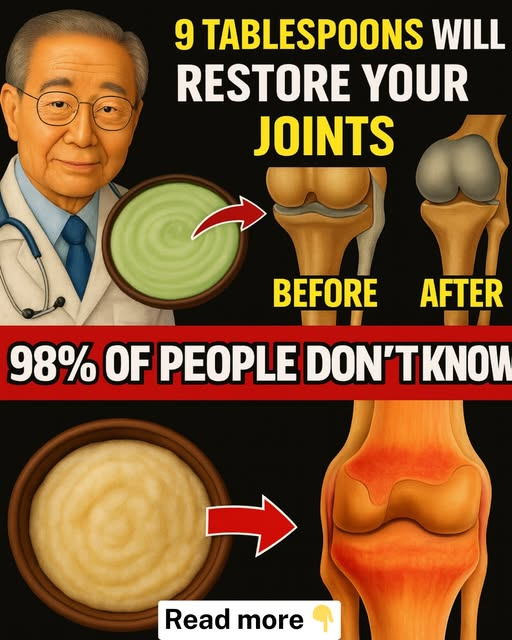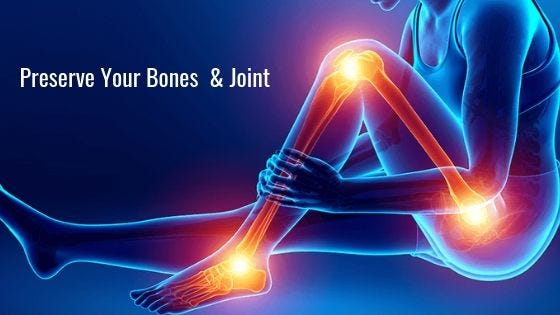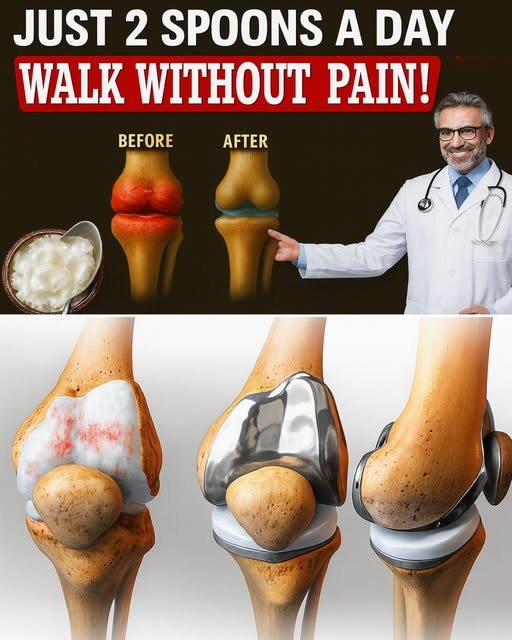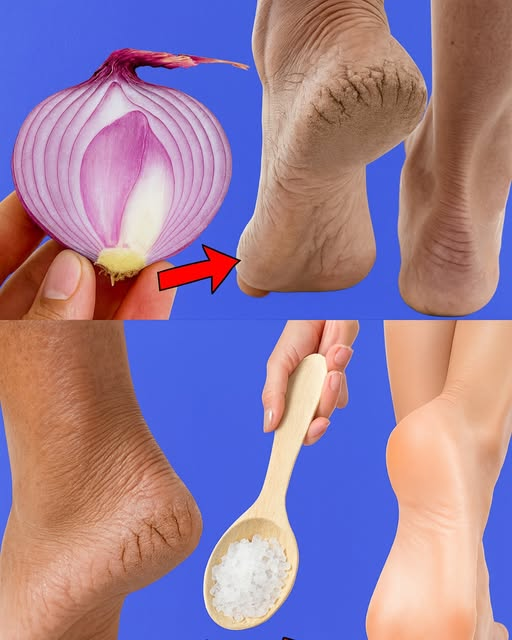Did you know that after the age of 30, the average person begins to lose 1% of bone density every year? Weakening bones and stiff joints are not just signs of aging—they’re often the result of nutritional gaps and lifestyle habits that can be improved. Around the world, traditional remedies have long recommended natural foods and tonics to support bone strength and joint flexibility. One of the most talked-about trends today is the idea that consuming certain nutrient-rich mixtures—measured in tablespoons a day—may give your body the support it needs to stay mobile and strong.

On our fanpage, readers often ask: Is there a simple, daily habit I can add to protect my bones and joints without relying only on supplements? In this article, we’ll explore the “9 tablespoons a day” approach, the science behind it, traditional recipes from different cultures, and practical tips to keep your skeletal system healthy. By the end, you’ll have a clear understanding of whether this daily ritual could make a difference in your routine.
Why Bone and Joint Health Matters
Your bones and joints are the foundation of your movement, but they face constant wear and tear. Here’s why supporting them matters:
- Bone Density Decline: After midlife, bone loss accelerates, especially in women.
- Joint Wear: Cartilage naturally thins with age, leading to stiffness.
- Lifestyle Stress: Sedentary habits, poor posture, and nutrient-poor diets can worsen the problem.
Maintaining strong bones and flexible joints requires a combination of nutrients, movement, and mindful daily practices.
The “9 Tablespoons a Day” Concept
So, what’s behind this idea? In traditional nutrition and modern wellness, measuring food-based remedies in tablespoons is a simple way to track consistency. The “9 tablespoons a day” practice usually refers to consuming small but powerful amounts of nutrient-dense foods spread throughout the day.
Key Nutrients for Bones and Joints
- Calcium – The building block of strong bones.
- Magnesium – Helps absorb calcium effectively.
- Collagen & Protein – Essential for cartilage, ligaments, and bone structure.
- Omega-3 Fatty Acids – Reduce inflammation in joints.
- Antioxidants & Polyphenols – Protect bone cells from damage.
Traditional 9-Tablespoon Recipes

Different cultures have developed food-based mixtures that can be measured in tablespoons and consumed daily. Here are some examples:
1. Sesame Seed & Honey Mix
- Why it works: Sesame seeds are rich in calcium, magnesium, and zinc. Honey provides antioxidants and makes the mix easier to consume.
- How to use: Grind sesame seeds into a paste, mix with raw honey, and take 3 tablespoons, 3 times a day.
2. Flaxseed & Yogurt Blend
- Why it works: Flaxseeds are packed with omega-3s and lignans, while yogurt provides calcium and probiotics.
- How to use: Stir ground flaxseeds into yogurt and enjoy 3 tablespoons per meal.
3. Collagen & Nut Mix
- Why it works: Collagen supports joint cartilage, while almonds or walnuts provide healthy fats and minerals.
- How to use: Blend collagen powder with crushed nuts and take 9 tablespoons throughout the day.
Quick Comparison

| Mixture | Key Nutrients | Suggested Use |
|---|---|---|
| Sesame + Honey | Calcium, Magnesium, Zinc | 3 tbsp x 3 times/day |
| Flaxseed + Yogurt | Omega-3, Calcium, Probiotics | 3 tbsp daily |
| Collagen + Nuts | Protein, Healthy Fats, Collagen | 9 tbsp spread out |
Practical Tips for Success
- Spread Intake: Don’t take all 9 tablespoons at once—split them across meals.
- Pair With Exercise: Weight-bearing activities (walking, light weights, yoga) amplify benefits.
- Stay Hydrated: Water supports joint lubrication.
- Consistency Over Perfection: Long-term, steady habits matter more than occasional bursts.
Benefits and Considerations
Potential Benefits
- May improve bone density over time.
- Supports joint lubrication and flexibility.
- Provides natural anti-inflammatory compounds.
- Simple, food-based approach instead of relying solely on pills.
Things to Keep in Mind

- Food-based remedies support but do not replace medical treatment.
- Allergies (e.g., sesame, nuts, dairy) should be considered.
- Overconsumption of certain seeds or oils may upset digestion.
- Results vary from person to person and take time.
Who Might Benefit?
- Adults over 30 concerned about bone density.
- Women after menopause, who face higher osteoporosis risk.
- People with mild joint stiffness looking for natural relief.
- Anyone interested in food-as-medicine traditions.
Conclusion
The “9 tablespoons a day” approach is less about a magic formula and more about consistency with nutrient-rich foods that have stood the test of time. Whether it’s sesame with honey, flax with yogurt, or collagen with nuts, these small daily doses can add up to big support for bones and joints. If you’re looking for a simple way to boost mobility, reduce stiffness, and invest in long-term skeletal health, adopting this tradition might be a practical and delicious step forward.
FAQ
Q1: Will 9 tablespoons a day really strengthen bones?
A: When combined with exercise and a balanced diet, nutrient-dense foods can support bone health, but they are not a guaranteed cure.
Q2: Can I choose different foods for my 9 tablespoons?
A: Yes. The concept is flexible—choose calcium-rich seeds, omega-3 sources, or collagen mixes based on your needs.
Q3: How long before I notice results?
A: Most people may notice improved energy and less stiffness in a few weeks, but bone density changes take months or years.
Q4: Is it safe for everyone?
A: Generally safe, but people with food allergies, chronic illnesses, or on medication should consult a doctor first.
Q5: Can this replace supplements?
A: It may reduce the need for some supplements, but always follow your healthcare provider’s guidance.
Disclaimer: This article is for educational purposes only and does not provide medical advice. Always consult a healthcare professional before making significant dietary changes.




